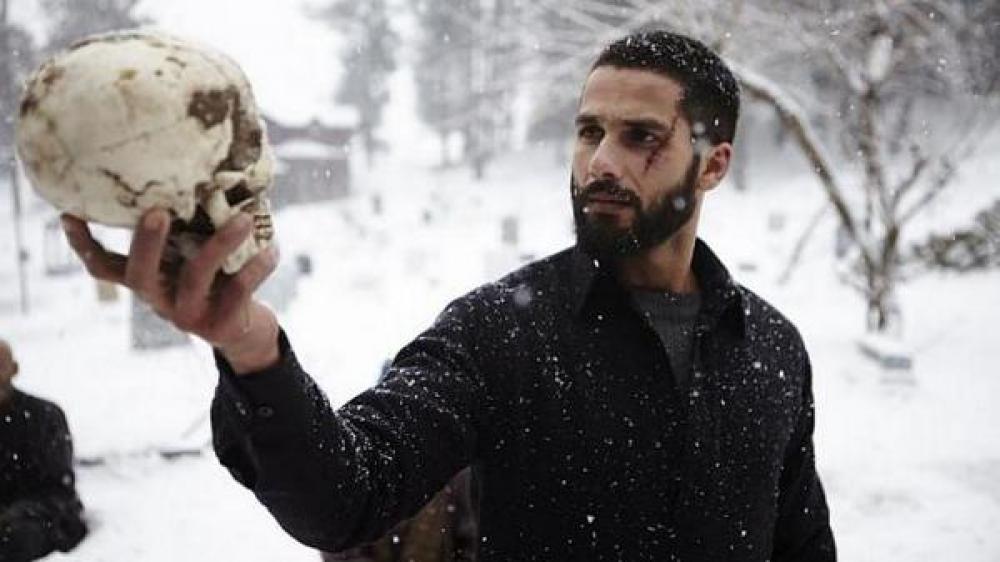Bollywood versus Hollywood: How Bollywood Does Shakespeare Better Than Hollywood
Share with friends

There's an epicness to Bollywood Shakespeare that Hollywood versions completely miss...
In 2013's Bollywood adaptation of Romeo and Juliet, Goliyon Ki Raasleela: Ram-Leela (A Play of Bullets), Leela (Juliet) played by Deepika Padukone, stands atop her balcony gazing down at Ram (Romeo) played by Ranvir Singh. When he climbs up to meet her, the secret lovers dare to steal a kiss in the moonlight, and gazing longingly into each others’ eyes. Leela leans in, breathing hard . . . and pushes Ram off into the fountain below.
Ranvir Singh and Deepika Padukone on the balcony in Ram-Leela
Not only are they more original, but Bollywood adaptations of Shakespeare offer more realistic settings, better music and an overall “epicness” that very few Hollywood directors can pull off. The proof is in the pudding. Hollywood adaptations of Shakepeare almost never become popular. Bollywood's Shakespeare is some of India's most popular cinema.
Originality is the key. My main gripe with other adaptations is that they are too similar to the plays. For instance, let’s take Hamlet with Mel Gibson in 1990, and the version with Kenneth Branagh in 1996. Granted the point of the latter is to be completely unabridged, I personally find that for theater productions this is fine, but for a film, it's just too much. If I wanted to see the play replicated I would rather just read it or watch it performed by a theater company.
I’m tired of watching the same grandiose sets with actors,, all have a certain look and delivery, acting out unrelatable plays that have been hammered into our minds since childhood. I want something different, something exciting, something modern yet still believable. Bollywood delivers
Take writer/director Vishal Bhardwaj’s latest film Haider (2014), based on Hamlet. The original play is set in Denmark, and focuses on Prince Hamlet who mourns the loss of his father and is angered by his mother's hasty marriage to his uncle, Claudius. Translate this to Bollywood. The film is set in Kashmir during the conflicts of 1995 when an insurgency for Kashmir independence gained headway. Haider (Shahid Kapoor) the Hamlet character, mourns the disappearance of his father, who has been taken to a prison camp after performing surgery on a rebel. His mother Ghazala (Tabu) seeks refuge in the home of her brother in law, Khurram (Kay Kay Menon). Because nobody knows whether Haider’s father is still alive, Ghazala is considered a half-widow, an unfortunately common term used to describe women at that time whose husbands’ were missing. However, they soon learn of his death, and Ghazala marries Khurram. The main differences between Haider and Hamlet are ones that serve to bring the setting of Kashmir to the forefront, and tell the story of Hamlet in an original, realistic way possible for that setting.
In India the caste system is prominent, the elections are riddled with corruption, and religious tension is intense. Where Romeo and Juliet seems far fetched and unrealistic in the U.S., it's not so when set in India. That's not to say that things aren't changing in India, but it is so vast and diverse that it encompasses regions whose idiosyncrasies are perfect settings for Shakespeare's plays, and let’s face it, way more entertaining.
What really puts Bollywood Shakespeare over the top is the music. Ram-Leela alone has 10 songs in it! Just as you recover from the first, there’s another, and another, and another. It works for the story of Romeo and Juliet, which is itself excessive, melodramatic, and over the top. In Haider, at the moment where Prince Hamlet is meant to put on a play in which Claudius kills his father, Haider “celebrates” the union of his mother and uncle with a Bollywood musical number (which is heightened by his unstable mental state) that tells how his uncle killed his father and seduced his mother. The song called Bismil is sung by Sukhwinder Singh, whose voice lends a grittiness that matches with the conflict-ridden territory. The choreography and costumes all enhance the story and act as a sort of “cherry on the top," creating a grandiose epicness absent in Hollywood's intimate attempts.
n Vishal Bhardwaj’s 2006 adaptation of Othello - Omkara - protagonist Omkara (Ajay Devgan) confronts Kesu (Cassio) (Vivek Oberoi) as they both realize how they were manipulated by Langda (Iago) played by Saif Ali Khan. Omkara, gun in hand, moves so he is facing Kesu, and the camera shifts so that all we can see is Kesu’s back, and Omkara’s face. In an instant, after threatening Kesu, Omkara fires the gun . . . at himself. He staggers back revealing the gunshot wound and falls to the ground, his body lying right below the swinging cot containing his dead bride, Dolly (Kareena Kapoor). We get glimpses of both of their bodies as the cot swings back and forth, with Dolly’s pale skin mirroring her innocence, and Omkara’s dark complexion mirroring his guilty conscious. It’s the kind of scene that makes you want to cheer in your seat.
Omkara, Haider, and Ram-Leela, apart from all being Bollywood adaptations, were (and are) also all extremely commercially successful, with Omkara even earning a spot on the UK’s top ten list. Compared to the miniscule commercial success of Oliver Parker’s Othello from 1995, Kenneth Branagh’s Hamlet in 1996, these are major blockbusters. The only Hollywood adaptation to come close was Baz Luhrmann’s Romeo + Juliet. Though Othello and Hamlet played on limited screens, Haider is also playing on limited screens, and it has already made over $8 million, while Hamlet only grossed a little over $4 million. Furthermore, Omkara, Haider, and Ram-Leela as well as Maqbool (Macbeth) have all earned immense critical acclaim.
Shakespeare is regarded as larger than life, and the Bollywood adaptations embody that extraordinary presence, which is why they triumph over Hollywood’s attempts.




